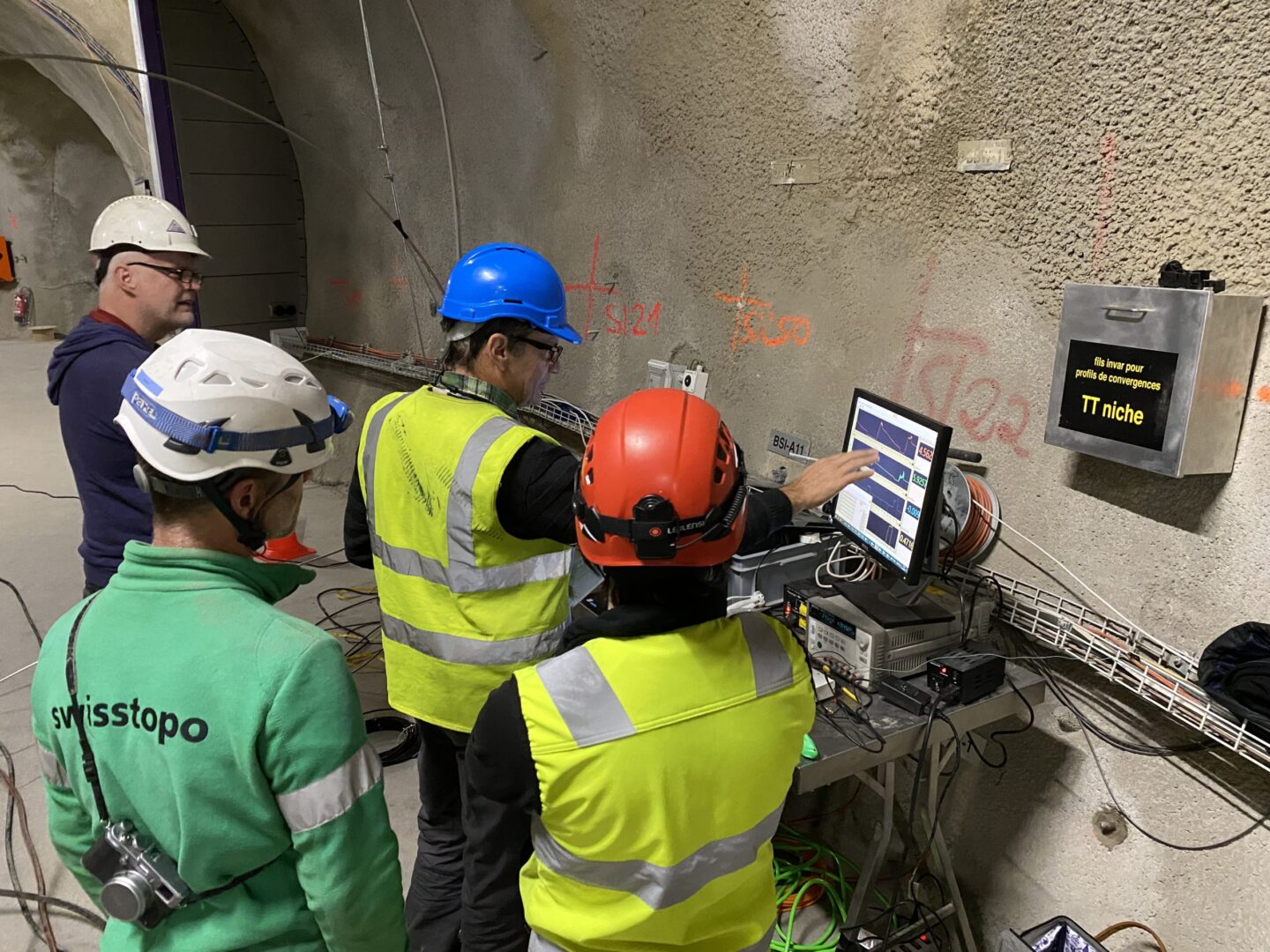Conducted in underground rock laboratories, their work involves activating a geological fault to explore whether leakage pathways can be created when carbon dioxide is injected in pressurized form into subsurface rock. Because Switzerland’s Mont Terri Rock Laboratory is the only underground research site in the world where this can be explored at scale, the team had to think fast that November when only one team member was allowed access to the site to conduct the next series of experiments. To explore fault reactivation, the team had devised a complex experimental procedure where fluids are injected into the fault in a highly controlled manner and real-time decisions need to made based on a steady stream of fault injection and deformation monitoring data. The goal of the experiment was to generate seismicity significant enough so its impacts can be measured with very sensitive sensors and small enough such that no damage occurs in the underground research laboratory. This is typically a job for a large team of geoscientists working together but this time it had to be done by one person.
So, in November 2020, project lead Yves Guglielmi traveled to Switzerland alone, entered the underground tunnel system about 1,000 feet below the surface and assumed his usual role of slowly injecting fluids into boreholes to create just the right amount of pressure within the fault. “Our goal is to activate a fault and measure potential leakage processes without creating a major instability that could trigger an earthquake and unintentionally damage other experiments underway at Mont Terri, Guglielmi said. “Typically, I’d go into the rock lab with five of my colleagues, each one an expert in evaluating a different aspect that is critical to our making the quick real-time decisions together that could impact whether our actions trigger an undesired result.
“One looks at the injection flow rate and pressure for example, another at strains, the other at seismicity. One will control the injection system, and one will look at the safety in the 200m-long network of galleries where the experiment is set and keep an eye on any effect on the neighboring on-going experiments.”
Whether there in person or in this case back in Berkeley, that data appears on their screens thanks to a semi-autonomous remote monitoring system developed at the Geosciences Measurement Facility and deployed at Mont Terri since 2018.
“Based on what the data tell us, together we decide in real time whether I should keep on injecting at a high rate, or stop. It’s a balancing act because we want to inject fluids at high enough pressure to activate the fault but not so much that we’d create too much seismicity as to trigger an adverse event,” Guglielmi said.
In ways the team never expected, the remote monitoring system developed years back at the GMF allowed them to adapt to the unique challenges imposed by the pandemic. With 6,000 miles and 9 time zones between them, the team talked hours over Zoom and What’s App–going over the real-time data each one was seeing so that they could decide together what would be Yves’ next steps.

“There’s concern that there is the risk of fault leakage and induced seismicity in GCS, but we don’t yet have clear enough knowledge of what the risk is or how severe it is at scale,” Guglielmi said. “Faults are complex zones where there are still many unknowns about how fluids can leak along them.”
The EESA team’s research marks the first time that scientists were able to observe leakage in an active fault at this scale and resolution. Indeed, there are very few CO2 injection experiments in fault zones worldwide, especially experiments that offer the opportunity to evaluate the potential for this to occur at scales closer to a real-world context. This particular underground rock physics facility–Mont Terri—is a network of horizontal galleries extending over a 300m x 200m area located 250-to-300m below Earth’s topographic surface. As such, it provides the ideal spot for investigating how big a risk there is with GCS because Mont Terri’s geology is a perfect analog to a caprock overlying a CO2 storage reservoir, according to Guglielmi. For these investigations, benchtop experiments conducted at laboratory scale (centimeter or less) are too small to allow researchers to draw any meaningful conclusions whereas field scale and reservoir scale–which span 100s of meters to kilometers respectively –are too vast to explore these research questions. However, in-situ experiments such as those that can be conducted at Mont Terri are at a scale big enough to integrate the full field complexity of a geological fault zone yet not so large as to be able to “control” the experiment’s boundary conditions.
In a way, Guglielmi considers that COVID helped GMF advance its capabilities, forcing it to adapt to restrictive conditions that required the team to share fluxes of data mostly remote as they carried out extremely complex experiments. The Mont Terri experiment perfectly illustrates that.
“We were so fortunate to already have such a sophisticated monitoring platform set up that could allow us to collaborate while nearly fully remote. From that experience at Mont Terri, we learned that having the real-time remote monitoring of fault characteristics, plus the real-time connection among our team members over Zoom and What’s App allows us to adapt how we go about injecting fluids in real time too,” said Guglielmi.
The team is looking ahead to what’s next, hoping to ultimately leverage AI so that they are able to operate more experiments with fewer people on the ground than would usually be necessary. Guglielmi views the new way of conducting field experiments like they demonstrated at Mont Terri as a major step towards what might be called the “self-driving” field lab, the holy grail of field work where experimental controls and decisions would be made automatically, without human intervention, based on real-time data analysis and artificial-intelligence-based decision making.


